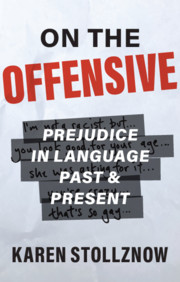Refine search
Actions for selected content:
3 results
4 - Preparing for War
- from Part II - The Enigma of Consensus
-
- Book:
- The Generalissimo
- Published online:
- 31 July 2025
- Print publication:
- 14 August 2025, pp 87-110
-
- Chapter
- Export citation
2 - Prelude: The Balkans 1912–1913
- from Part I - The Fronts
-
- Book:
- Forgotten Wars
- Published online:
- 15 March 2021
- Print publication:
- 01 April 2021, pp 36-60
-
- Chapter
- Export citation

On the Offensive
- Prejudice in Language Past and Present
-
- Published online:
- 06 October 2020
- Print publication:
- 15 October 2020
